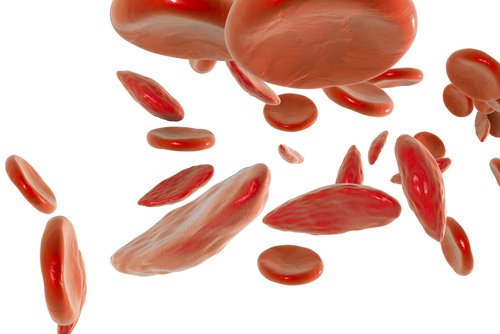Hemoglobin-rich Droplets Within Blood Cells May Be Source of Sickle Shape, Study Says

Droplets packed with hemoglobin may briefly form tiny clusters inside red blood cells that ultimately deform their shape, and cause the pain crises that mark sickle cell disease (SCD), a study reports.
The research, “A mechanism for reversible mesoscopic aggregation in liquid solutions,” appeared in the journal Nature Communications.
In people with SCD, hemoglobin (the protein in red blood cells that carries oxygen) can form rigid protein strands in the blood cells that alter their shape. These sickle-shaped cells tend to stick to blood vessels to slow or stop blood flow, leading to a drop in oxygen levels in tissues and the attacks of severe pain known as vaso-occlusive crises.
For these rigid strands — or fibers — to grow, hemoglobin first assembles in tiny liquid droplets of mesoscopic size (somewhere between microscopic and macroscopic).
“Though relatively small in number, the mesoscopic clusters pack a punch,” Vassiliy Lubchenko, the study’s senior author and a professor of chemistry at University of Houston, said in a news release. “They serve as essential nucleation, or growth, centers for things like [SCD] fibers or protein crystals.”
These droplets contain more hemoglobin than is found elsewhere in red blood cells, Lubchenko said, and may be evident as protein molecules very briefly bound togethers as “dimers or duos”— bound for about a fraction of a millisecond. Such dimers “are key to the formation of the mesoscopic clusters,” he added, that lead to the hemoglobin fibers seen in people with sickle cell disease.
After forming, the droplets grow “until becoming mechanically unstable and break apart,” the researchers wrote.
According to the team, these clusters suggest “a tantalizing possibility” that the precursors of living cells were not encased in membranes, but were more similar to so-called “membrane-less organelles.”
Lubchenko believes the mesoscopic clusters have points in common with these organelles as well. Because the clusters lack a membrane, they are able to rapidly exchange molecules within a blood cell’s cytoplasm (the material filling a cell, apart from its nucleus).
In the context of sickle cell, preventing the formation of these clusters may be a possible way of treating the disease.






